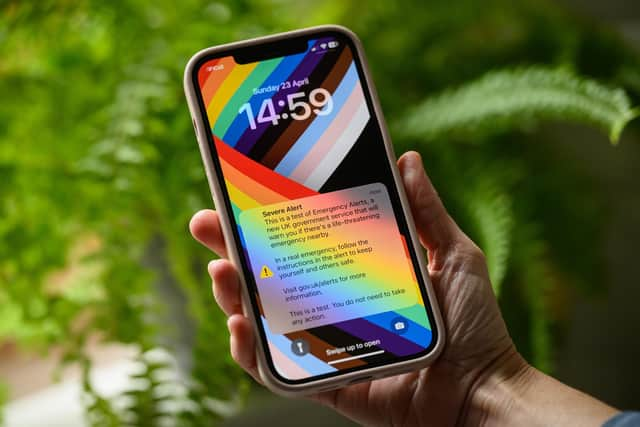What went wrong with government’s National Alert drill?


While they do their diligence, I’ve been asked a lot why this alert is even needed?
The answer lies squarely with climate change. The government website https://www.gov.uk/alerts lists three reasons why – as citizens – we might get these emergency alerts in real life: Severe flooding, fires and extreme weather.
Advertisement
Hide AdAdvertisement
Hide AdAll of them are a direct result of climate change to such an extent, the emergency services will need to let people know if their lives are suddenly in danger.


Fire services recorded at least 24,316 wildfires in England from June to August in 2022. This is almost four times the 6,213 in the equivalent period in 2021, and about two and a half times the 9,369 for June to August 2020.
Flooding is increasing too.
The texts sent to phones on Sunday told us all it was a drill. The reality is though, we’ve needed these alerts in the UK for years.
They have been used for a while in the US, Australia, Japan, New Zealand, Canada, The Netherlands and France.
Advertisement
Hide AdAdvertisement
Hide AdSome of these countries have experienced climate change disasters in ways that has taken life; flooding in New Zealand in recent months, Japan’s 2011 tsunami that claimed over 18,000 lives. Hundreds of Canadians died in the 2021 heatwave that saw 180 wildfires decimate the Pacific North West.
National alerts save lives because they buy time.
They can’t change an outcome or trajectory of flooding or wildfires but they can give people in the path of them the opportunity to get to safety.
The Environment Agency has a website where people can sign up for emergency flood alerts https://www.gov.uk/sign-up-for-flood-warnings but of the people living in areas that could be affected by flooding, less than 30 percent have signed up to that existing alert system.
We know flash flooding typically happens at night; people living in basements and flood prone areas need these alerts to save their lives and get them to safety.
Advertisement
Hide AdAdvertisement
Hide AdIn the event of a flood, these alerts could buy people time to move valuables upstairs, to make sure children and pets are evacuated and to ensure the elderly and vulnerable are taken care of.
In natural disasters, we know time saves lives and that helps emergency responders too. Drill last month was national, but going forward system will be rolled out when it needs to be by location, so all mobile phone masts in area affected by catastrophic fire, floods, or extreme weather will sound and alert will have instructions on what people should do next and how they can get to safety.
Celebrity spot
Bindi Irwin, daughter of Steve (photo: Getty Images), zookeeper, conservationist, and environmentalist has carried on her father’s legacy after he died from being pierced in the chest by a stingray barb while filming in the great barrier reef in 2006. The 24-year-old mum of one says: “I want my children and my grandchildren to live in a world with clean air, pure drinking water, and an abundance of wildlife, so I've chosen to dedicate my life to wildlife conservation so I can make the world just a little bit better.”
Green swap
Swap wine bottles for wine cans (photo: Adobe). Not only are cans easier to recycle than glass, they also weigh less, reducing the carbon footprint for transportation. Supermarkets are stocking cans of wine up to 250ml so why not give them a go?